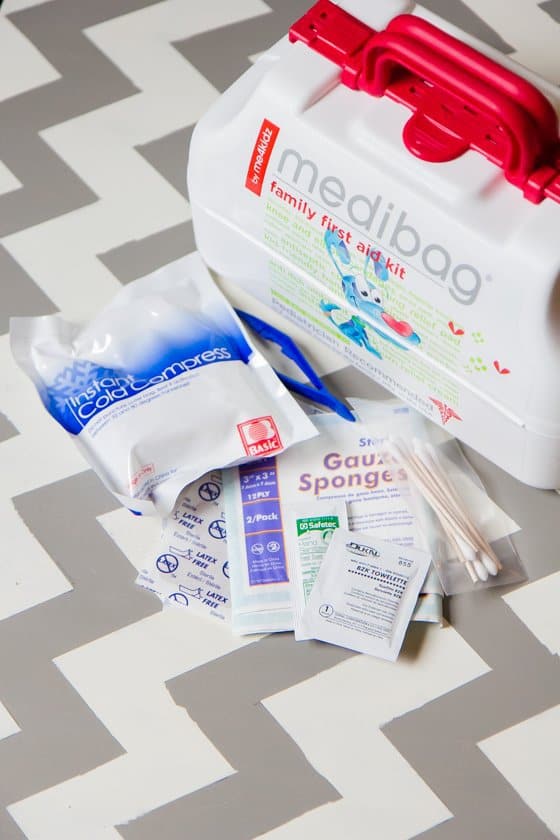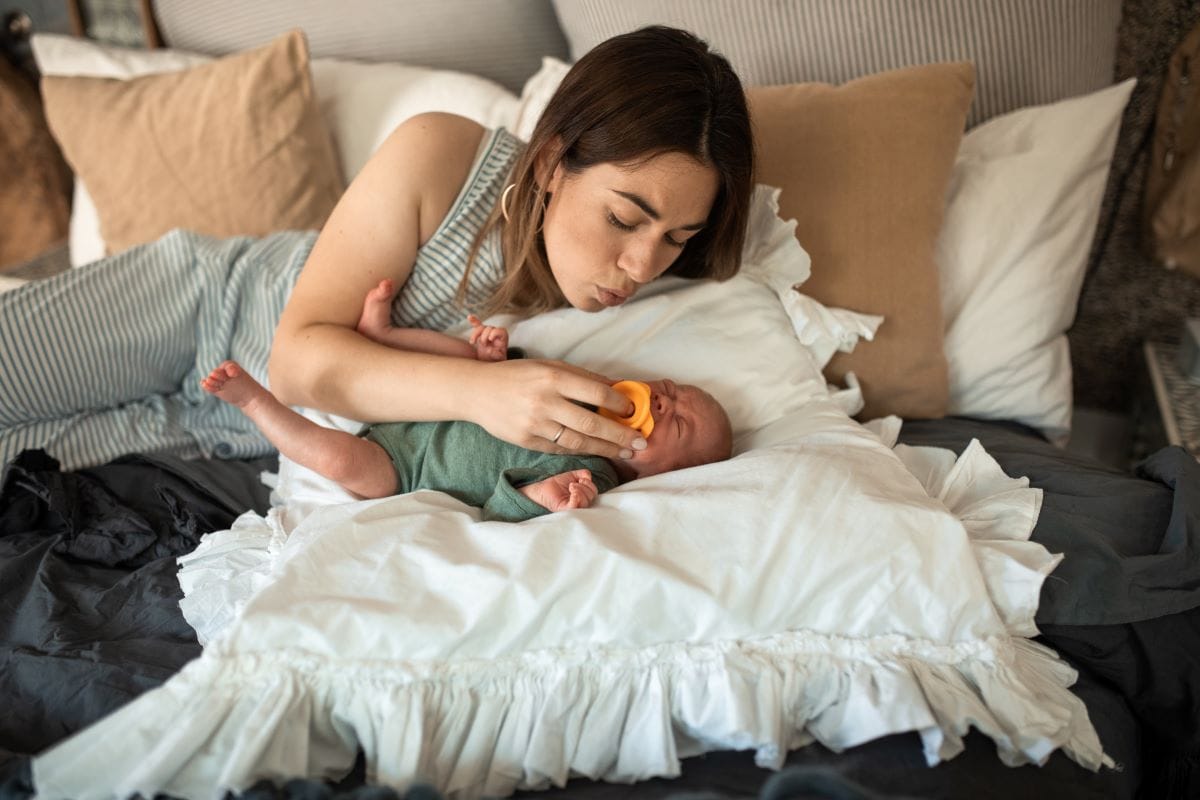As a Mom, you want to provide the best care for your child, especially when faced with boo-boo’s and scrapes. A properly stocked first aid kit is essential for every single household, and we are here to tell you what should be in it, and why.
Nothing beats being properly trained on how to handle emergencies and being prepared in case of one occurring. Children are extremely accident prone, and keeping a stocked medical kit in the household (as well as a travel one for the car) is key to having a prepared home. You don’t want to be caught off-guard with an injured child and no supplies to quickly treat them! Create a proper first aid kid with the following supplies:
What You Need:
Sterile Gauze:
Sterile gauze is the workhorse of every first aid kit. It is far more effective to use to stop bleeding than a band aid. Gauze can be layered easily to create more coverage, or folded to fit the perfect size. Not to mention the fact that it is dirt cheap. Whenever you come into contact with an open wound, it’s important to use sterile materials (as opposed to a paper towel, tissue, etc.) How do you know if it’s sterile? You must unwrap it from it’s packaging. Gauze is also very absorbent. To treat burns specifically, you will want to use gauze that will not stick to a wound, so having a few packs of non-stick Telfa gauze is also suggested.
Bandages:
If you’re the typical mom, you have cartoon ridden bandages adorning your medicine cabinet. Other than having a marked up price tag due to licensing, these bandages work great! You may want to considering investing in additional sizes of bandages, such as square sized, and butterfly closures. To play it safe, make sure that all the bandages are labeled as latex-free.
Tape:
Medical tape can come in handy for many different things, such as adhering gauze on to a wound, or splinting.
Latex Free Gloves:
If you are treating anyone other than your child or immediate family where medical history is unknown, you will want to use gloves to prevent the spread of bloodborne pathogens. You may also never know who you come into contact with that may have a specific latex sensitivity or allergy, so it’s best to play it safe by keeping some latex free gloves on hand. Nitrile is the most common material, followed by vinyl.
Gauze Roll:
Gauze rolls are also great for wrapping a wound while putting pressure on it at the same time. They are inexpensive and versatile enough that having a few on hand is always suggested.
Tweezers:
Tweezers are typically placed in first aid kits for sterility purposes due to specific wounds. Splinter removal would require tweezers, but you will want to make sure that those tweezers don’t also double as your eyebrow shaping tweezers. Keep them separate, and leave the medical ones packaged until you need them. Once you use them, make sure to sterilize them again by dipping them in rubbing alcohol and putting them carefully away. Having disposable tweezers in your first aid kit is often preferred.
Optional Supplies:
Cold Compress Pack:
Keeping one or two of these on hand is a good option to give to someone else in case of an emergency. As long as the ice pack isn’t directly touching an open wound, having a reusable option is just as effective, and way more cost efficient. We love these reusable cool packs by Physicians Care, because they come in cute designs, and are easy to keep on in the freezer all the time. A plastic bag full of ice cubes is also very effective to reduce swelling.
Ointments:
Keeping ointments on hand is a personal decision. One very important thing to remember is to never give it to a child without parental consent. It is technically a medicine, and a person could have an adverse side effect to it. There are also some questionable materials found in ointments that you may not consider using otherwise such as petroleum, or parabens, so excessive use of ointments is not advised.
For information on when and how to properly treat a burn and use burn creams, check out this post from familydoctor.org. We suggest stocking your first aid kit with Burn-B Gone, because it contains no petroleum products, and it has no expiration date.
If you’re looking for a great, all- natural healing salve (comparable to Neosporin) this Green Salve from Motherlove is a wonderful option.
Q-Tips:
If you are going to be investing in any sort of ointment or creams for your first aid kit, stick a few q-tips in a plastic bag. Any time you apply a topical ointment or cream, make sure to use a q-tip, or a gloved finger! Not only are you protecting yourself from pathogens, you are also keeping the wound itself far cleaner compared to using your fingertip which has germs and oils on it naturally.
Alcohol Pads:
These are optional for home first aid kids, because simple anti-bacterial hand soap also will do the same job, and you won’t have any stinging affect for your child. If you foresee being out and about often, and need something more portable than a kitchen sink, saline wound wash is the way to go, as it will clean out debris from a wound.
Disposable CPR Shield:
If you are certified in CPR, your first aid kit is a great place to store a shield. If you are interested in more information regarding being trained in CPR or First Aid, check out this post on Training for Parenthood: Infant and Child CPR.
Pin this handy checklist to keep for reference!
Additional Info:
Now that you have a fully stocked home first aid kit, make sure you are performing regular maintenance to keep everything in good condition, stocked and within the expiration dates.
- Check all item’s expiration dates every 6 months.
- Make sure that all items are completely sealed and sanitary.
- If “tools” such as scissors or tweezers are out of their wrapper, dip them in rubbing alcohol and place them in a plastic sandwich bag to store in your first aid kit.
- If a CPR shield has been used, throw it away immediately.
- Carefully inspect all gloves to make sure they are not torn or cracked. If they are in the original wrapper, do not remove them.
- If you’re in the market for a ready made first-aid kit that would only require minimal supplementing, we suggest this kit by Medibag.
- Sometimes, being a child with a boo-b00 is traumatic. Keeping a few organic lollipops or some cute stickers in your first aid kit may ease their suffering quite a bit.
This post is meant for educational purposes only. It is not intended to replace medical advice from your physician, doctor or health care professional. Please read our terms of use for more information.
Photo Credits: Lilac Saloon












































